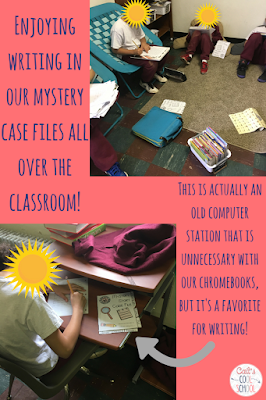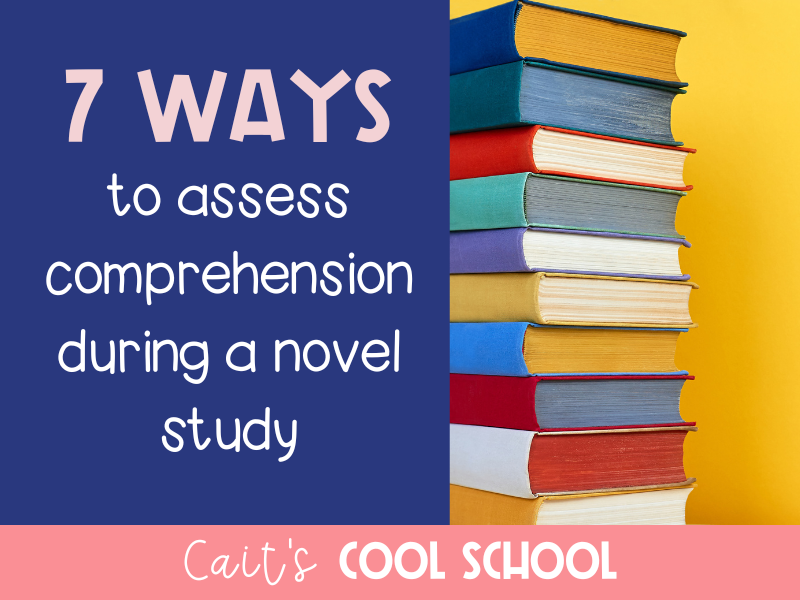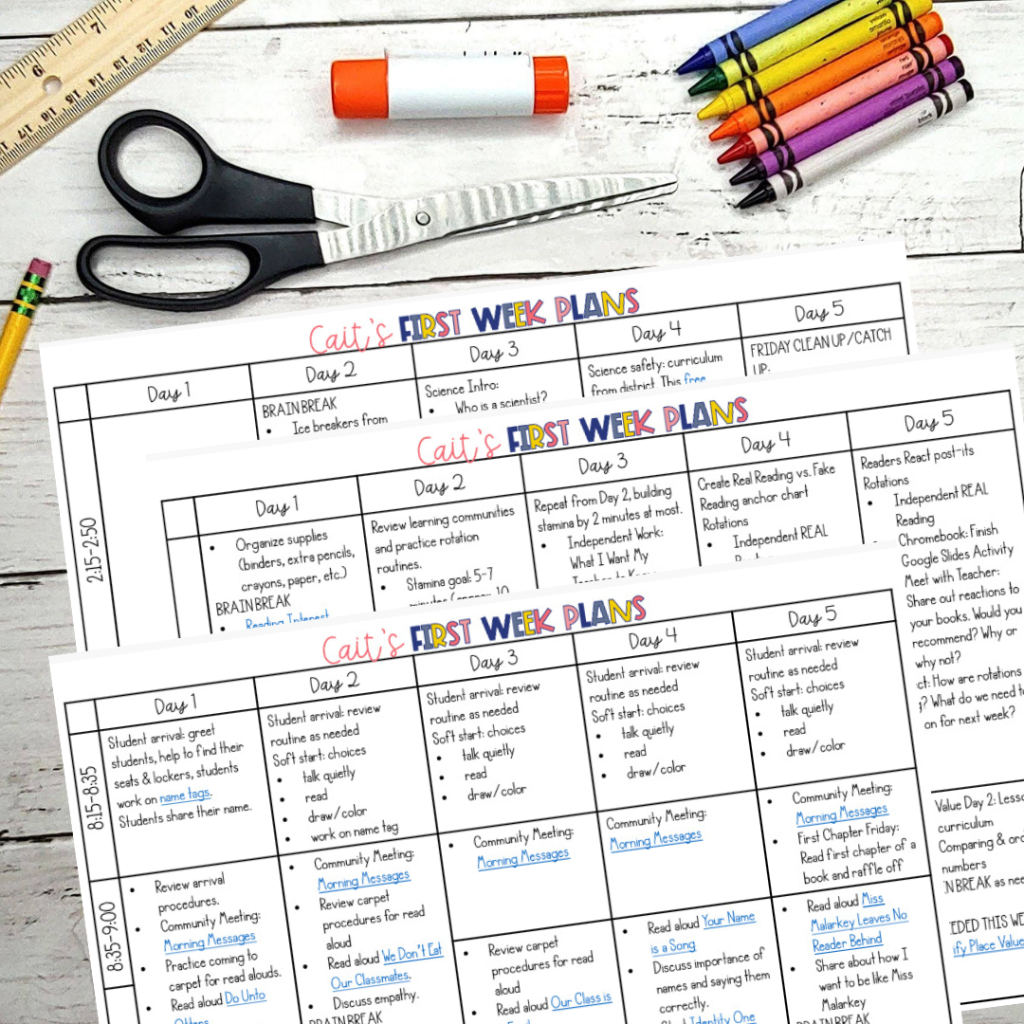I hope you’ve been following along with the great journey through our entire mystery unit. First, my Detective Mission got my students engaged and excited. Then we watched a little Scooby Doo to reinforce our detective skills. Most recently, my class was split into two groups, reading mystery novels while completing their Detective Mystery Case File. After finishing Sammy Keyes and the Hotel Thief and The Westing Game, we were truly experts in every part of reading mysteries.
The only logical next step was to start writing our own mysteries! My students knew all of the parts that needed to be included: a detective, crime, suspects (maybe even a red herring!), and clues.
And then *bam*, instantly when we started talking about writing these mysteries, their brains started going crazy! Their detectives sounded like they were superheroes. They had weapons and cars and could solve crimes magically. Um, wait, what? This wasn’t like what we had been reading.
Instantly, I realized I needed to reign in their imaginations a little. We talked about our mystery detective models. In The Westing Game, Turtle was our 13 year old detective, and, in Sammy Keyes and the Hotel Thief, Sammy was 12. They solved crimes using their intellect and clues they had access to. Even Scooby and the gang are only in high school, and they didn’t use any extreme means to solve their crimes. Following these examples, we came up with some detective guidelines. (I said “we,” but really it was mostly me because some of my students were wildly disappointed at these restrictions!)
- Detectives could be no older than 14. <– Reasoning: writers always write what they know and my 10 year old students couldn’t “know” much about being more than 4 years older. Also, I knew this would limit transportation. No crazy cars or motorcycles!
- All crimes had to be solvable by the character that’s the age of the detective. <– This one made sense mostly to my students because we brainstormed some examples. Some suggestions were stolen objects, bullying-type harassment, or grades hacked/changed at school.
- Clues had to be found logically. <– This was a realistic story, friends. Clues do not magically appear to detectives. Again, we looked to our examples of Turtle, Sammy, and the Scooby gang to see how they found clues.
 Using these guidelines, we did a much better job writing our detective stories. We used this mystery case file as our graphic organizer to brainstorm and record all of our ideas.
Using these guidelines, we did a much better job writing our detective stories. We used this mystery case file as our graphic organizer to brainstorm and record all of our ideas.
Some friends still had a few problems with making their stories completely make sense (there were a *few* magically appearing clues 😜). Through writing conferences, we were able to make most of these errors go away. The conferences were CRUCIAL to helping me be able to differentiate for my students and enable my students to go further as writers. (To read more about how I run writing conferences, check out this blog post.)

For this project, I checked both organizers and rough drafts through conferences. While working on our rough drafts, we did also have some mini-lessons about action words, dialogue, and imagery to help make sure our mysteries were spectacular. Using examples from our novels (Sammy Keyes and the Hotel Thief & The Westing Game), we saw how those expert writers used those three elements to be super writers.
After our rough drafts were edited, my students each typed up their story in Google Docs on our chromebooks. At the end, we had a very fun sharing day where my students were able to read aloud their mysteries.
My one regret as a teacher is that I wish I would have published their writing altogether in a book. That’s a goal for next time!
Have you ever taught mystery writing before? Share any tips or ideas in the comments! Also, feel free to let me know if you have any questions. This was my FAVORITE unit to teach last year. I can’t wait to start it again with my class this year.

 If you’re interested in mystery reading & writing, but not sure where to start, check out this mystery bundle which includes a Detective Book Mission, Mystery Novel Case File, and this Whodunnit Mystery Narrative case file (these are each sold separately as well). Don’t forget to check out my other mystery blog posts as well for more ideas!
If you’re interested in mystery reading & writing, but not sure where to start, check out this mystery bundle which includes a Detective Book Mission, Mystery Novel Case File, and this Whodunnit Mystery Narrative case file (these are each sold separately as well). Don’t forget to check out my other mystery blog posts as well for more ideas!







 The first FIVE days of lesson plans for the beginning of the year.
The first FIVE days of lesson plans for the beginning of the year.